Working with Brick
Common brick-related repairs include repointing mortar joints, repairing chimney tops, rebuilding chimneys and fireboxes, and cleaning bricks. You may also have to repair or add flashing where the chimney meets the roof, as shown in Chapter 5. Less common repairs include filling openings after the removal of doors or windows. If you want to create an opening to a brick wall, leave that to a structural engineer and a licensed and insured mason.
To conserve resources and get the bestlooking results, respect existing masonry. Match existing bricks and mortar as closely as possible, including the thickness of mortar joints.
When repointing brick, choose a mortar of appropriate strength.
Of the many types of brick available, renovation calls mainly for building brick, also called common brick. Building brick is classified according to its weathering grade: SW (severe weathering), MW (moderate weathering), and NW (nonweathering). SW grade should be used where brickwork will be below grade—that is, in contact with the soil and hence subject to freezing in cold climates. Use SW on all floors, whether indoor or outdoor. MW grade is used indoors or on exteriors above grade. NW is used only indoors, though not as flooring.
Standard-size brick is nominally 8 in. by 4 in. by 233 in.; but it is actually 7% in. by 358 in. by 2!4 in., to accommodate mortar joints 3з8 in. thick. Thus three courses of brick (and mortar) will be 8 in. high.
Brick is also named according to its positioning, whether it is laid on its face, end, or side. Stretcher and header are the most common placements, with rowlock patterns often being used to finish courses beneath windowsills or to cap the tops of walls where coping isn’t used.
In masonry work, the word bond has several different meanings. Mortar bond denotes the adhesion of brick (or block) to mortar. Structural bond refers to the joining or interlocking of individual units to form a structural whole. If there are two wythes (pronounced w-EYE-ths) of brick
(a double wall), the wythes may be bonded structurally by steel ties, or by header bricks mortared into both wythes, or by grout poured into the cavity between the two wythes. Finally, pattern bond indicates brick placement, as shown in "Bond Patterns,” on p. 186.
If you’re laying up a typical brick pattern— say, running bond—you will need about 63з4 bricks per square foot of wall; figure 7 bricks per square
![]()
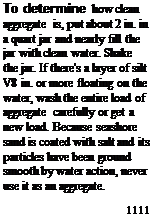
![]()
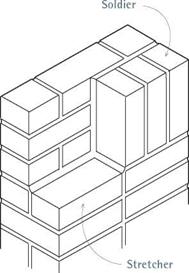 Two wythes
Two wythes
|
|
|
|

![]()


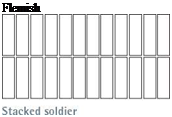
 foot in order to have enough extra for waste. As you handle bricks, inspect each for soundness. All should be free of crumbling and structurally significant cracks. When struck with a trowel, bricks should ring sharp and true.
foot in order to have enough extra for waste. As you handle bricks, inspect each for soundness. All should be free of crumbling and structurally significant cracks. When struck with a trowel, bricks should ring sharp and true.
You should wet bricks before using them so they won’t absorb moisture from the mortar mix. Hose down the brick pile once a day (more often in hot, dry weather), but don’t overdo it. If the bricks become too wet, they will slide around on the mortar bed.
Cutting bricks. Wear goggles when cutting bricks. If you’re cutting across brick faces, rent a brick cutter, a levered tool that cuts easily. Otherwise, cut bricks by hand.
An experienced mason can score and cut bricks with only a trowel, but you’ll probably find that a brick set works better. Placing the
|
1 г |
^l |
II 1 |
|
□□□□□□□□ |
||
|
1 г |
ІГ |
II 1 |
|
II |
II |
II II |
|
1 II |
II |
II 1 |
|
_ll___ |
Jl___ |
Jl____ II |
|
Common |
||
|
1 ІГ |
ІГ |
II 1 |
|
1 II |
II |
II 1 |
|
1 II |
II |
II 1 |
|
1 II |
II |
II 1 |
|
1 II |
II |
II 1 |
|
1____ IL |
___ IL |
___ II___ 1 |
|
Stretcher |
||
|
1 ІГ |
^L |
II 1 |
|
1 ІГ |
^L |
II 1 |
|
□□□□□□□ |
||
|
1 ІГ |
^L |
II 1 |
|
Dutch cross-bond |
□□□□□□□□ □□□□□□□□ □□□□□□□□ □□□□□□□□ □□□□□□□□ □□□□□□□□ Stacked header
brick on a bed of sand makes the brick less likely to jump when you strike the brick set. After marking the cut-line on the face of the brick, hold the brick set perpendicular to the brick and strike it with a 4-lb. hand sledge. Because the edge of the brick set is beveled on one side, keep the bevel on the waste side of the line. You can also use a mason’s hammer as shown in the top photo at right, controlling the cut by using the hammer point to score entirely around the brick. Then rap the scored line sharply to break the brick.






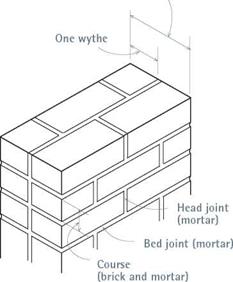
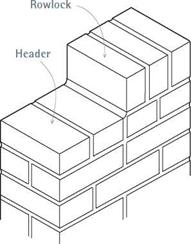
Leave a reply